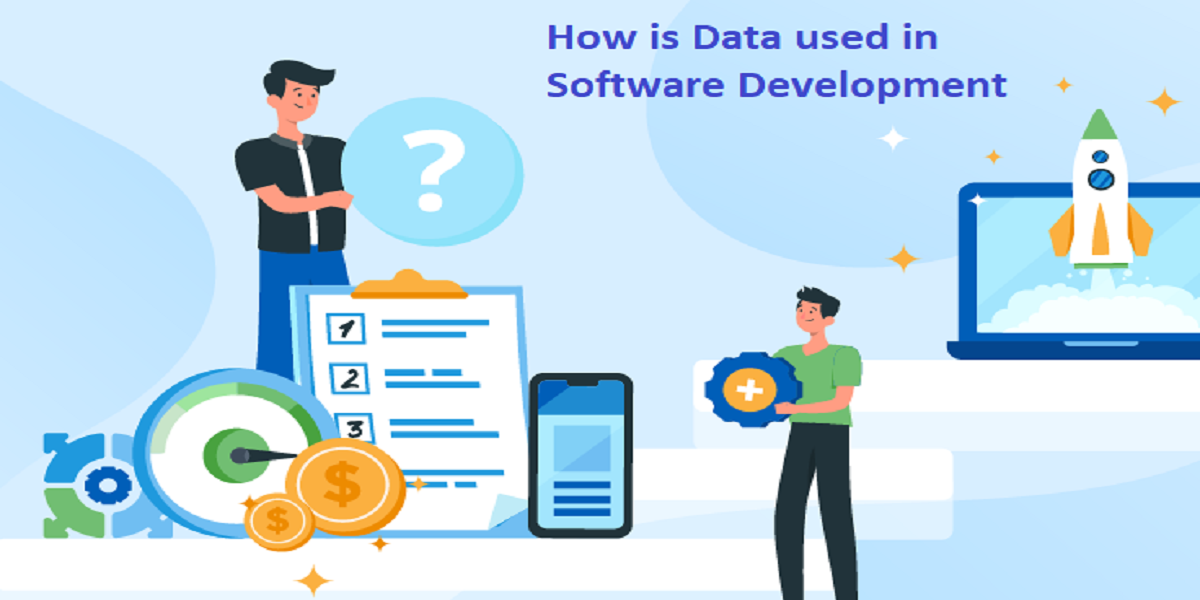
How Is Data Used In Software Development?
- By Ankit Thakor
- 11-11-2021
- Software
The total amount of data created worldwide is projected to reach more than 180 zettabytes up to 2025. So exactly how much is that?
It’s a whole lot of data…
But to give you an idea- to store one zettabyte of data, we would need one billion one terabyte hard drives!!! (BTW, one terabyte equals 1000 gigabytes)
The point is- the data is voluminous and still growing exponentially that you cannot manage and analyze it using traditional computing tools. That, my friend, is Big data!!
However, it’s not always about the size. One can’t say that the data crossing the” X” size limit would be classified as big data.
What is Big Data?
Gartner glossary defines big data as information that is high-volume, high-velocity, and/or high-variety and can be leveraged for improved insights, decision-making, and process automation.
In a nutshell, big data is huge, generated at high speed (often real-time), acquired from a broad spectrum of sources in many formats, high-quality, accurate, and reveals actionable insights.
Let me simplify it for you with an example of the healthcare industry.
Clinics and hospitals across the globe generate an astronomical amount of data in the form of patient records and test results, almost 2,314 exabytes every year at lightning-fast speed.
What’s more? This data is of various types- Structured such as well-maintained excel sheets, semi-structured such as log files, and unstructured such as X-ray records.
When combined with modern analytics, this wealth of data enables faster disease detection, better treatment, and reduced costs.
Nevertheless, the generated data's accuracy and trustworthiness, also called veracity, take center stage and potentially differentiate between those successfully adopting big data and those struggling to get the hang of it.
Wondering how to put your big data to use and unlock big possibilities?
We have identified for you the top 7 real-world big data use cases.
These are industry-specific use cases that will guide you through your big data journey and help you estimate the value it brings to the table.
Top 7 Real-World Big Data Use Cases
1. Predict maintenance, do not assume it
It’s common for many manufacturing units to have technicians walking around for tedious maintenance checks of machines.
But with the proliferation of IoT devices, manufacturers are now leveraging the vast pool of untouched data to predict mechanical failures.
Yes, we are talking about predictive maintenance of equipment in manufacturing.
Log entries, error notifications, sensor data, engine temperature, equipment details such as year, make, model and other parameters make vital contributions to big data that enhance the transparency of system health and aid in predictive maintenance.
By analyzing these factors, manufacturers can curb potential machine failure in its nascent stage, ensure optimal performance, reduce system downtime, prevent accidents and improve cost-effectiveness.
Think of the oil and gas industry. The equipment, most often, is in deep-water and inaccessible locations. Thus, companies can utilize big data to monitor their machinery and discover new oil sources.
2. Financial fraud detections
Imagine that your housewarming ceremony is around the corner. It means a lot of shopping; more THAN USUAL. While you are still buying things to make the event perfectly memorable, you get a call from your bank to confirm whether your credit card activities are genuine or potential fraud.
While banks, insurance agencies, and other financial institutions are adopting cutting-edge technologies to make financial matters more convenient for customers, it has left cybercriminals and scammers on the loose.
Accounting fraud, financial statement fraud, identity theft, credit card fraud, mortgage, and insurance fraud are some of the deceptive activities that steal millions of dollars from institutions and consumers every year.
Big data security solutions help you unravel the patterns that possibly serve as red flags in the process of thwarting hackers and mitigating risk during fraud detection, assessment, credit rankings, brokerage services, etc.
3. Analyze customer behavior to predict customer behavior
Ever wondered how Netflix can recommend exactly what you would enjoy watching?
Have you felt that with every watch, those recommendations get better and better?
When was the last time you had to go to great pains to find and compare different brands of blenders before actual shopping?
Personalized customer experience and recommendations are flattering, right? And yes, you guessed it right. It is enabled by big data.
It has already become a trusted companion for renowned brands like Bank of America, McDonald’s, Amazon, and Netflix in translating customer behavior data into meaningful insights.
Real-time data generated through clicks, log data, and video search help companies recommend the product that perfectly suits your taste has better chances of driving conversion and offers a superior customer experience.
4. Pharma companies reduce time-to-market for new drugs
The pharmaceutical domain suffers from slow research, and the development of new drugs-which most often than not lasts for over a decade.
The big data library serves as a massive repository of valuable information, from published/unpublished PhD dissertations to gene profiles to patents.
Pharmaceutical researchers can harness big data coupled with AI and blockchain-based search tools to streamline and accelerate research. Also, historical and demographic data can help optimize clinical trials by selecting appropriate participants, efficient remote monitoring, predicting potential adverse reactions that cumulatively shorten the trial length and curtail associated costs.
Another great big data approach by many leading pharma companies is to generate critical insights into adverse drug reactions through unstructured data obtained from social media, google searches, medical forums.
5. Real-time social media marketing analysis
With social media becoming an integral part of people’s life, smart businesses have started to dive into the deep sea of big data to communicate to their audience.
Many enterprises are now investing in big data tools that analyze social media marketing platforms to help marketers better position their digital campaigns amidst various social media trends.
Having access to metrics, such as post likes, comments, reactions, businesses can better understand the interaction between their content and digital community.
It offers them the opportunity to create winning content, offers a personalized experience, plans trend-setting campaigns for the future, gauge campaign ROI, and respond intelligently to positive and negative comments.
6. Improved retail price points
Running a profitable retail business hinge on price point. Given its ability to significantly impact the business's overall revenue, you must get it right.
And retailers who are interested in building agile pricing strategies must not delay investing in big data solutions. As much as it sounds straightforward, getting to the profitable price point is quite tricky.
But with big data, adopting the best price point is possible.
Social media reactions, browsing behaviors, geographical and demographical influences, price movements for virtually all the product lines serve as easy access for retailers to information related to market and customers in almost real-time.
Omnichannel retailers can use big data to optimize different price points for different customer segments based on their online behavior!
Plus, big data can be of great advantage to streamline and visualize the overall operations of discrete departments- from inventory management to sales to back-office activities. It helps discover the weak links, minimize costs and thus offer more competitive price points in the market.
7. Big data for Agriculture Technology
Surprised to find this one on the list? Don’t’ be.
Although the agriculture sector is conventionally treated as a traditional area, the scope of big data application in agriculture is unquestionable.
In fact, industry leaders have already begun to harness big data to counter the pressures of climate change, increased food demand, and depleting viable farmland.
For instance, big data on fertilizer requirements, rainfall patterns, water cycles, etc., enable farmers to make the right decisions for improved yields. They can also finetune the pesticide concentrations and applications to avoid the dangerous consequences of pesticide overuse. These, along with other applications such as farm equipment maintenance and supply chain management, represent only the tip of the iceberg and can revolutionize the agriculture sector in a true sense.
To sum up, big data is here to stay and will continueto fuel more and more such innovative use cases.
Recent blog
.png)
Top 03 Audio Enhancers to Enhance Your Voice in Minutes
Technology | 18-04-2024.png)
Offshore and Nearshore Mobile App Development: A Guide
Mobile App Development | 17-04-2024.png)




